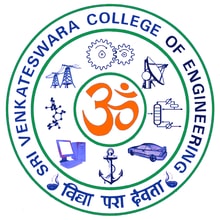Aspiring to become a civil engineer? But not sure about your decision?
Read this article to get the complete understanding of the real estate industry in India and job opportunities for the new entrants and how SVCE helps to pursue your dream career in this core sector.
Civil Engineering is one of the oldest and broadest engineering disciplines, Civil Engineering involves planning, designing, constructing, maintaining and supervising infrastructures which include facilities essential to modern life like highways, bridges and tunnels, schools, hospitals, airports and other buildings, sewage systems and water treatment facilities. Subsequently, the course also involves protecting the public and environmental health as well as improving existing infrastructure.
Introduction
The real estate sector is one of the most globally recognized sectors. The real estate sector comprises four sub-sectors – housing, retail, hospitality, and commercial. Students are unaware of the scope and the future of Civil Engineering in India in the next ten years. So, let us delve into the understanding of what the civil engineering future trends entails.
The growth of this sector well complements the growth of the corporate environment as it will give way to the demand for office space as well as urban and semi-urban accommodations. The construction industry ranks third among the 14 major sectors in terms of direct, indirect and induced effects in all sectors of the economy.
It is also expected that this sector will incur more non-resident Indian (NRI) investments in both the short term and the long term. Bengaluru is expected to be the most favored property investment destination for NRIs, followed by Ahmedabad, Pune, Chennai, Goa, Delhi, and Dehradun.
Some of the major investments and developments in this sector are as follows:
- First REIT raised Rs 4,750 crore (US$ 679.64 million) and was launched earlier in 2019 by the global investment firm Blackstone and realty firm Embassy group.
- In January 2019, Ascendas acquired Chennai’s Pallavaram IT Park for US$ 35.70 million.
- Iconic RK Studios property which is located in suburban Chembur, acquired by Godrej Properties.
- New housing launches across top seven cities in India are expected to increase 32 per cent year-on-year by 2018 end to 193,600 units.
- In September 2018, Embassy Office Parks announced that it would raise around Rs 52 billion (US$ 775.66 million) through India’s first Real Estate Investment Trust (REIT) listing.
- New housing launches across top seven cities in India increased 50 per cent quarter-on-quarter in April-June 2018.
- In May 2018, Blackstone Group acquired One Indiabulls in Chennai from Indiabulls Real Estate for around Rs 900 crore (US$ 136.9 million).
- In February 2018, DLF bought 11.76 acres of land for Rs 15 billion (US$ 231.7 million) for its expansion in Gurugram, Haryana.
Government Initiatives for civil engineering future plans
The central and state Government of India have taken several initiatives to encourage development in this sector. The Smart City Project, to build 100 smart cities, is a prime opportunity for real estate companies. Below are some of the other major Government Initiatives:
- In order to revive around 1,600 stalled housing projects across the top cities in the country, the Union Cabinet has approved the setting up of an Rs 25,000 crore (US$ 3.58 billion) alternative investment fund (AIF).
- Blackstone crosses the US$ 12 billion investment milestone in India.
- Puravankara Ltd, a realty firm plans to invest around Rs 850 crore (US$ 121.6 million) over the next four years to develop three ultra-luxury residential projects in Bengaluru, Chennai and Mumbai.
- Under Pradhan Mantri Awas Yojana (Urban) [PMAY (U)], 1.12 crore houses have been sanctioned in urban areas creating 1.20 crore jobs.
- The Government has created an Affordable Housing Fund (AHF) in the National Housing Bank (NHB) with an initial corpus of Rs 10,000 crore (US$ 1.43 billion) using priority sector lending shortfall of banks/financial institutions for micro financing of the HFCs.
- As of September 16, 2019, India had formally approved 419 SEZs, of which 234 were in operation.
- In February 2018, creation of National Urban Housing Fund was approved with an outlay of Rs 60,000 crore (US$ 9.27 billion).
Road Ahead
The Securities and Exchange Board of India (SEBI) has given its approval for the Real Estate Investment Trust (REIT) platform, which will help in allowing all kinds of investors to invest in the Indian real estate market. It would create an opportunity worth Rs 1.25 trillion (US$ 19.65 billion) in the Indian market over the years. Responding to an increasingly well-informed consumer base and, bearing in mind the aspect of globalisation, Indian real estate developers have shifted gears and accepted fresh challenges. The most marked change has been the shift from family-owned businesses to that of professionally managed ones. Real estate developers are also investing in centralised processes to source material and organise manpower and hiring qualified professionals in areas like project management, architecture, and engineering to meet the growing need of managing multiple projects across cities,
The growing flow of FDI into Indian real estate is encouraging increased transparency. Developers have revamped their accounting and management systems to meet due diligence standards to attract funding.
In 2019, housing affordability showed a marked improvement. We also saw a plethora of launches in the market. In 2020, Knight Frank expects the GDP growth to touch 6-6.5% by next year. It also expects the real estate sector to maintain its momentum.
Despite the weakness in the economy, real estate remained stable in 2019 and could revive in the new year, says a report by Knight Frank. Housing prices either fell or remained flat. Among the launches, 61% were in the affordable housing segment.
Now, Knight Frank expects the gross domestic product (GDP) growth to touch 6-6.5% by next year. It also expects the real estate sector to maintain its momentum. Here’s how prices and sales moved in eight top metros in India.
Scope of Civil Engineering:
Civil engineering demand
According to a report published in The Economic Times, 95 billion sq. Ft. is the predicted demand in the real estate and construction industry by 2020. Despite such high demand, the sector lacks sufficient workforce to meet this demand. Based on the report titled “Real Estate and Construction Professionals in India by 2020” by the Royal Institution of Chartered Surveyors, there is a demand-supply gap ranging between 82% and 86% of skilled civil engineers, architects, and others. This means our country needs 4 million skilled civil engineers until next year. These are a few statistics that make it clear that there is a massive demand for these professionals in the near future.
Growth
As a country, we are developing faster than ever, especially when it comes to infrastructure. Forty years ago, nobody would have thought that the commute between Bandra and Worli could have been completed in lesser than 40-50 minutes. Today, we can cover this distance in just eight minutes. This is only possible due to the Bandra-Worli Sea Link (BWSL) constructed in the Arabian sea, built by our civil engineers.
The BSWL is just one of the many examples that show how we are coming up with innovative solutions to meet the changing requirements. The requirement for such modern developments is bound to grow. If students are willing to work on groundbreaking developments, Civil Engineering provides them with room to grow and a chance to hone their skills.
International market value
The future of Civil Engineering is not just limited to the geographical boundaries of our country. According to a report by Global Market Insights Inc. on GlobeNewswire, the Civil Engineering industry is expected to reach a size of USD 11.72 trillion by 2025. One of the main reasons for such rapid development of this engineering discipline is the rise in population and urbanisation. By completing a programme from one of the best engineering institutes, students can work on sustainable infrastructure solutions, green buildings, and more all over the globe.
Variety
Today, Civil Engineering is not just related to constructing roads, buildings and bridges. Due to the advancement in technology, and industry-demand, this branch is further divided into 4-5 types. Civil engineering aspirant can consider leading a career in any one of the engineering niches mentioned below:
- Hydraulics & Water Resources
- Coastal and ocean
- Structural
- Transportation
- Materials
- Urban
These are just a few fields. As we develop, this branch will have a lot more to offer than it did ten years ago.
These are a few points that explain how and why this sector will boom very soon. This field has a lot to offer. We only need to learn how to make the most of it with the right kind of education and skills. With this unique combination, Civil Engineering aspirants are set for a brighter tomorrow.
Civil Engineering: Types of Job Profiles
Civil engineers get recruited by the Public Works Department, Central Public Works Department, Railway Recruitment Board, Highways Department, Construction Firms, Defence Forces Development Boards, Municipal Bodies, etc. They work in public and private sectors in all branches of design, construction, maintenance of roads, highways, bridges, dams, canals, docks, airports, housing complexes and in environmental management, etc. Civil engineers also work in quality testing laboratories, Military and defence services and as consultants.
Take a look at some of the job profiles that civil engineers land into after graduation.
| Job Profile |
Job Description |
| Structural Engineer |
They design, plan and supervise the construction of infrastructural projects like buildings, bridges, and so on. They also take care of alteration and extension to existing properties or structures. |
| Geotechnical Engineer |
The primary responsibility of Geotechnical engineers is to create projects and find solutions to the problems that are related to geology. |
| Environmental Engineer |
Environmental engineers develop solutions to environmental problems by addressing global issues, such as unsafe drinking water, climate change, and environmental sustainability. They are involved in efforts to improve recycling, waste disposal, public health, and water and air pollution control. |
|
|
| Water Resource Engineers |
Water Resource Engineers design water management systems and oversee the construction and maintenance of these systems as well. |
| Construction Engineer |
The main task includes – to plan, direct, and supervise large construction projects. They act as leader and middleman on construction projects and ensure everything about the project is safe, smooth and structurally sound. |
| Site Engineers |
They take responsibility for security, safety, health, organizing, supervising material and people working at the site. They are part of the site management team. |
| Lecturers/Professor |
A civil engineering lecturer/ professor imparts knowledge of the subject that would include teaching students about the nuances of civil engineering. |
Other Job Profiles for Civil Engineers
- Architectural Engineer
- Bridge Engineer
- Buildings and Bridge Engineer
- Cartographic Engineer
- Civil Inspection Engineer
- Coastal Engineer
- Concrete Engineer
- Construction Engineer
- Construction Project Engineer
- Consulting Civil Engineer
- Dams Engineer
- Drainage Design Engineer
- Environmental Engineer
- Foundation Engineer
- Geodetic Engineer
- Geomatics Engineer
- Highway Engineer
- Hydraulics Engineer
- Hydrographic Engineer
- Hydrological Engineer
- Irrigation And Drainage Engineer
- Land Drainage Engineer
- Materials And Testing Engineer, Civil
- Municipal Engineer
- Navigation And Positioning Engineer
- Ocean Engineer
- Photogrammetric Engineer
- Pipeline Engineer, Civil
- Pollution Control Engineer
- Precision Survey Engineer
- Public Health Engineer
- Public Works Engineer
- Rail Transportation Traffic Engineer
- Reclamation Engineer
- Remote Sensing Engineer
- River And Canal Works Engineer
- Sanitary Engineer
- Sewage Control Engineer
- Soil Engineer
- Solid Waste Management Engineer
- Spatial Information Systems Engineer
- Structural Design Engineer
- Surveying Engineer
- Traffic Operations Engineer
- Transportation Engineer
- Tunnel Engineer
- Urban Road System Engineer
- Water And Sewer Engineer
- Water Management Engineer
- Water Resources Engineer
- Water Systems Engineer
- Water Treatment Engineer
Why to choose CIVIL Engineering at SVCE
- Faculty expertise in diversified areas like Structural Engineering, Water Resources Engineering, Geotechnical Engineering, Environmental Engineering, Transportation Engineering and Mechanics of Materials.
- Excellent lab facilities for Materials testing, Soil testing, Concrete and Highway materials testing, Water and wastewater analysis and Computer Lab for training on Drafting, analysis and design software
- Research activities in core research areas like Green and sustainable building materials, Traffic & Transportation Engineering, Steel structures, Smart Materials, constitutive modelling, seismic isolation, magneto rheological gels
- Consultancy and Testing facilities on Materials testing , Characteristics analysis of Drinking water and Waste water, Wood, bricks and hollow blocks testing, Soil classification, Shear strength of soil sample,Concrete Mix Design,Structural design and drawing
- More opportunities for Industrial training and internships
- Enhancement of students skills through Civil Engineering Association activities and Students chapters like Indian Concrete Institute (ICI) and Institution of Engineers (IEI)
- Career guidance and training to take up Competitive exams
- Value Added Courses and Hands on Training Sessions on Latest software for civil engineering applications.
- Motivation for students to enroll in online courses and other certification courses and given due credits.
- Association of faculty with reputed professional bodies
Source :
http://bweducation.businessworld.in/
https://www.indiatoday.in/
https://www.financialexpress.com/
https://realty.economictimes.indiatimes.com/
https://economictimes.indiatimes.com/
https://www.ibef.org/







